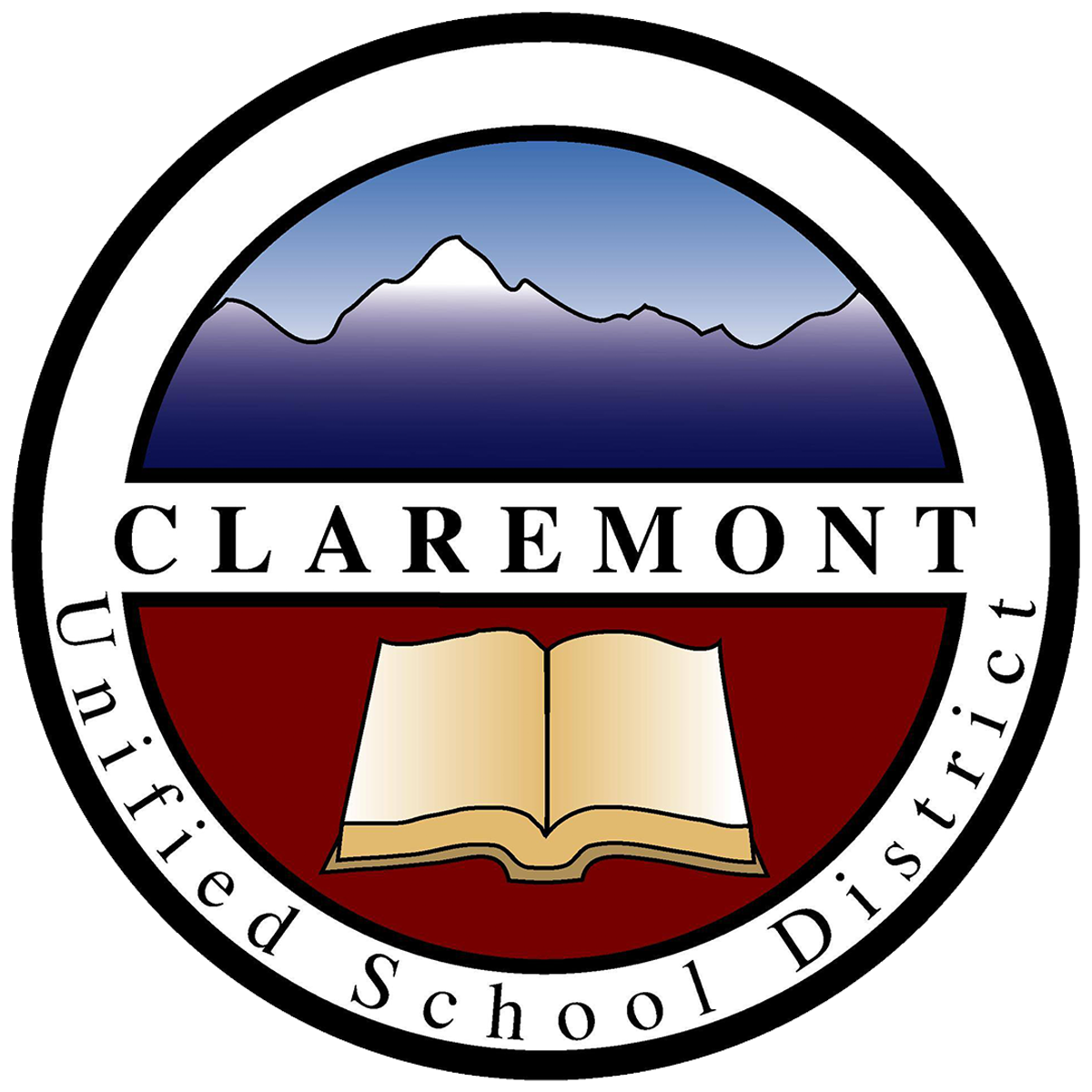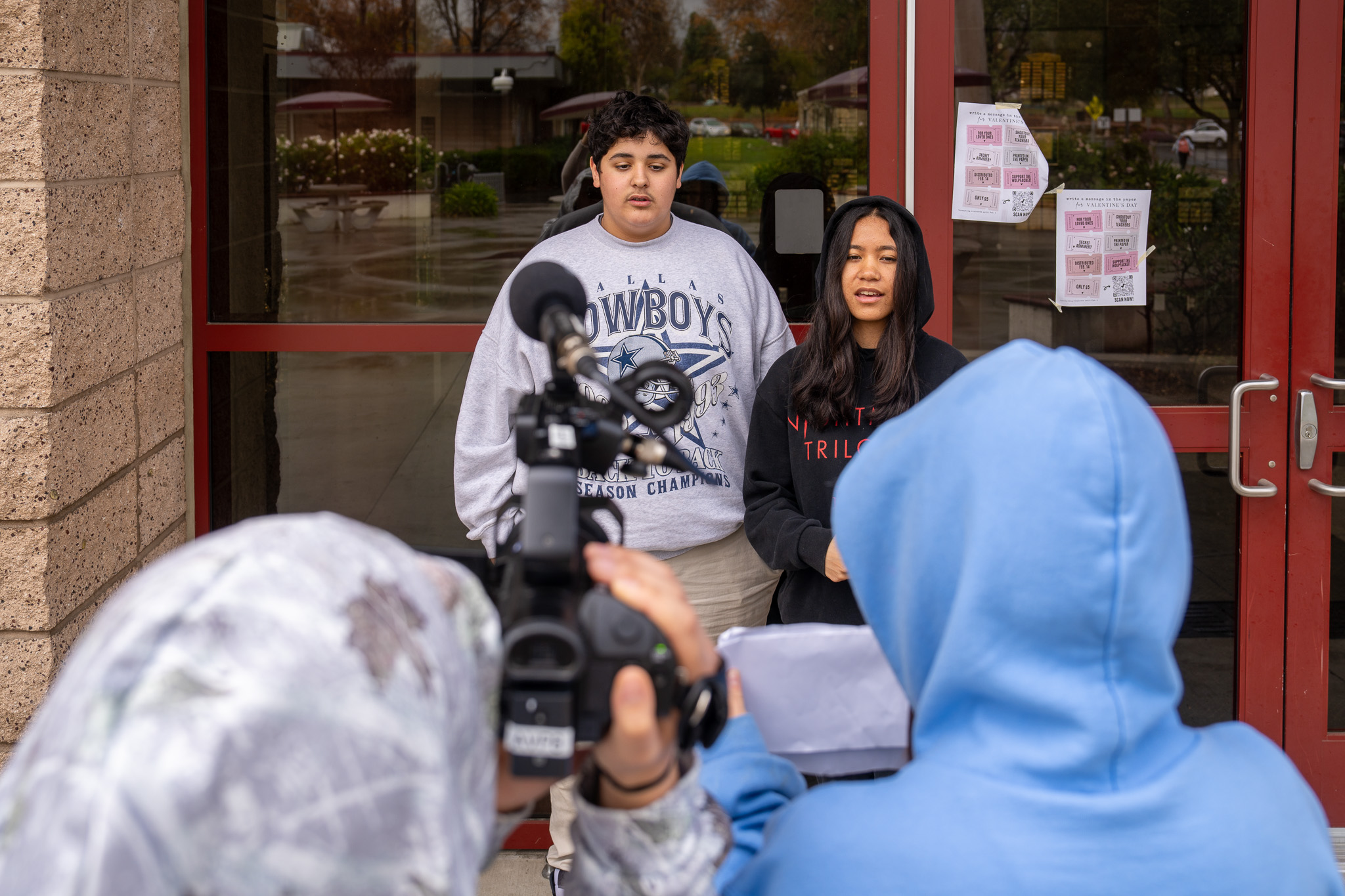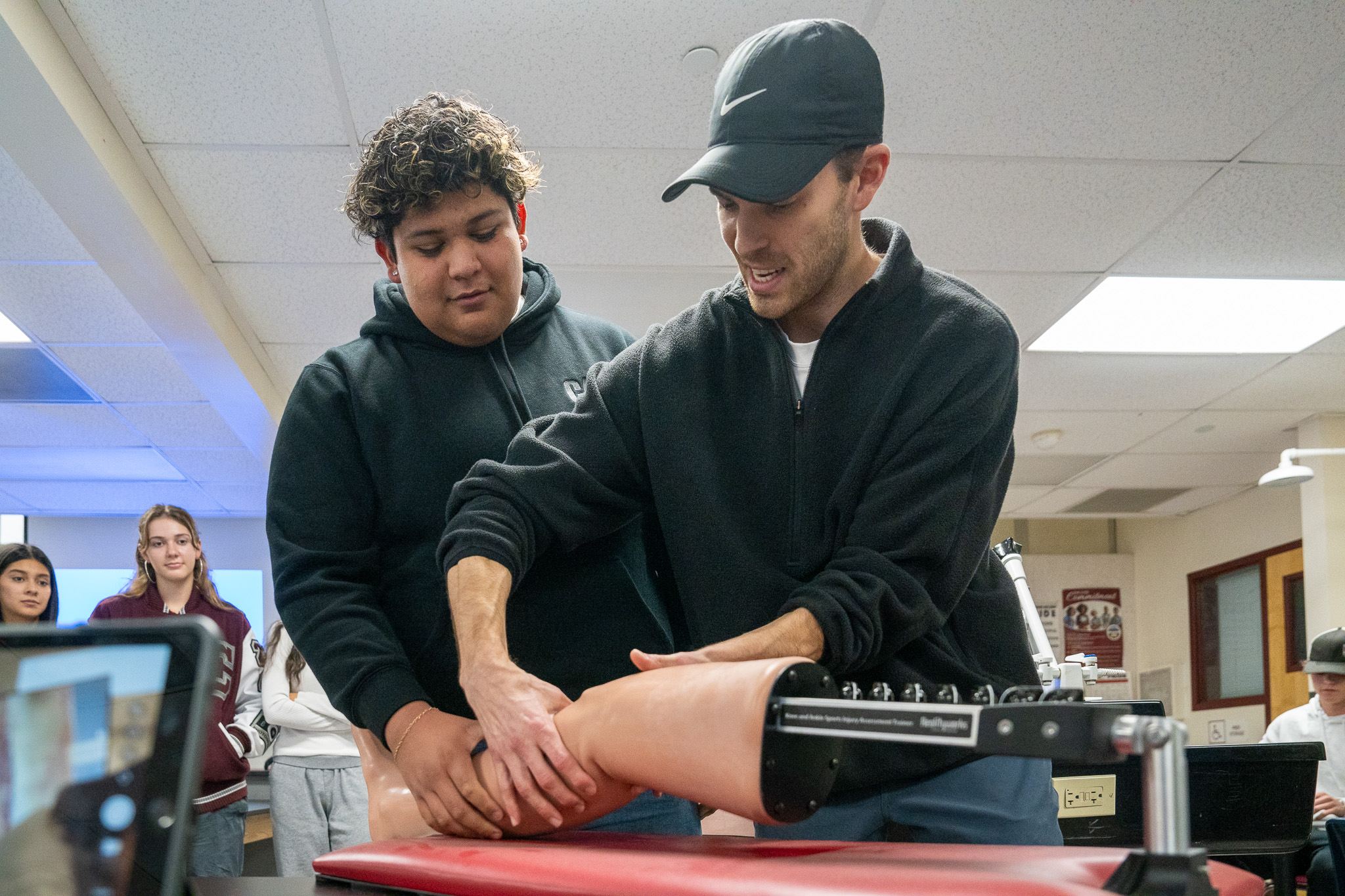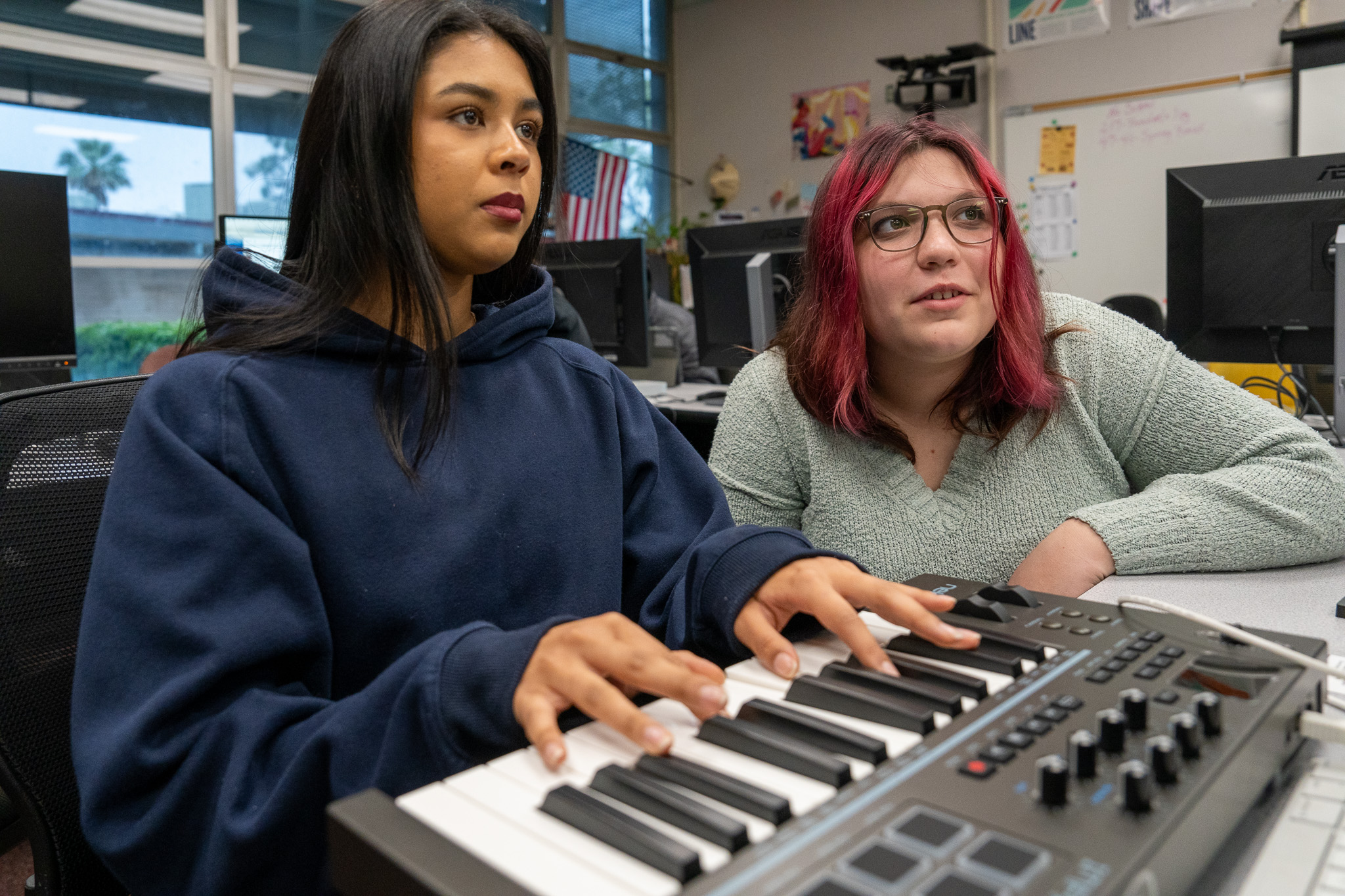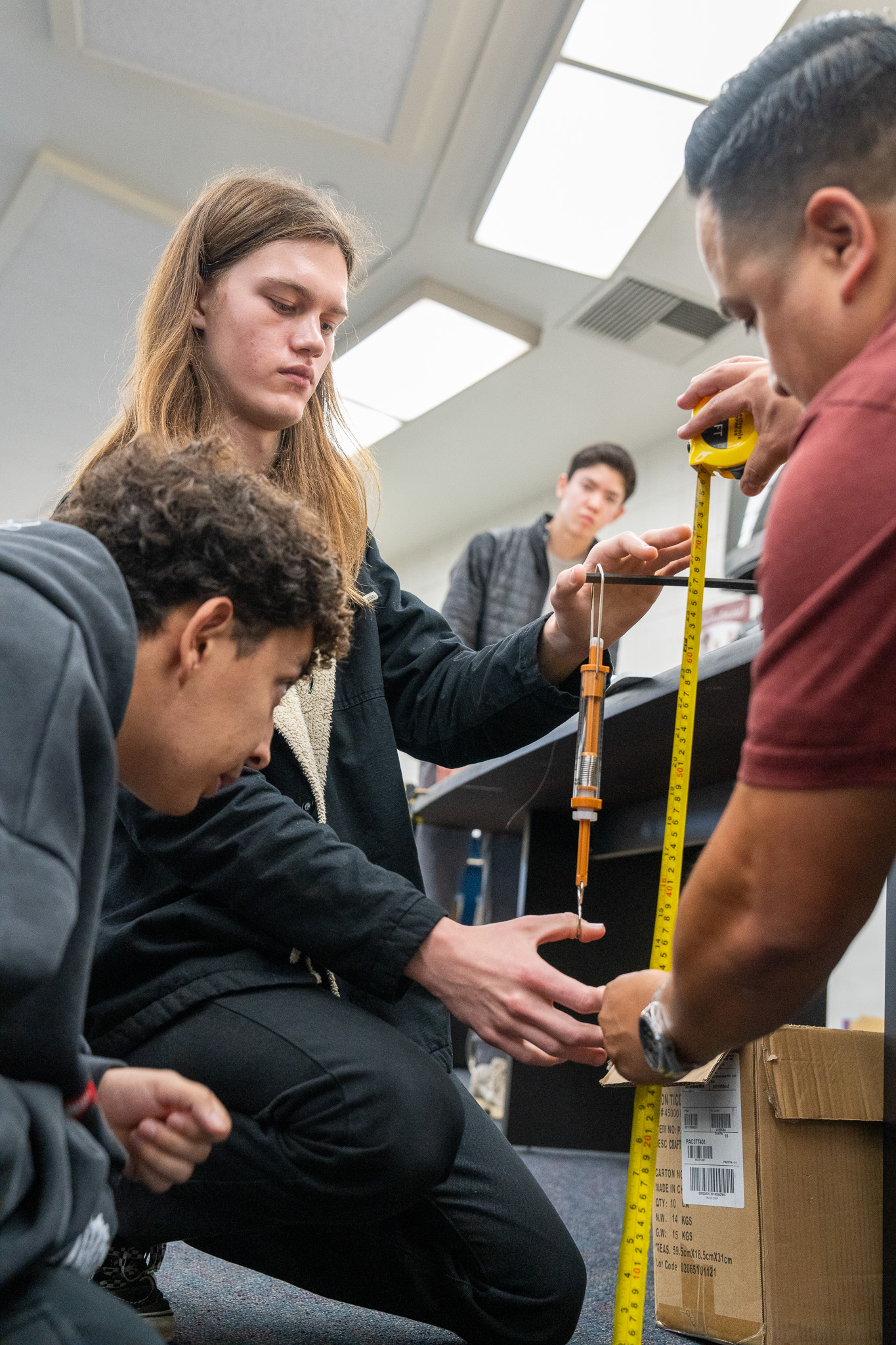
Discover your desired story effortlessly: simply select one of the buttons below for instant navigation.
Celebrating CTE Month at Claremont High School
February is Career and Technical Education (CTE) Month, a time to recognize and celebrate the valuable role CTE programs play in preparing students for future careers. At CUSD, we are committed to igniting curiosity, strengthening resilience, and inspiring excellence to empower each student’s academic journey—and our CTE programs at Claremont High School do just that.
CTE provides students with real-world skills, hands-on experience, and industry knowledge that help them succeed in college and career. This month, we highlight five dynamic CTE pathways available at CHS: Engineering and Design, Media Production, Sports Medicine, Audio Production, and Photography. Each of these programs gives students the opportunity to explore career fields, develop technical expertise, and build leadership skills in a collaborative, engaging environment.
Join us as we spotlight these exceptional programs, the dedicated educators leading them, and the students gaining invaluable skills for their future. CTE Month is more than just learning—it’s about opening doors to opportunity, fostering innovation, and preparing the next generation of leaders. Stay tuned for an inside look at how CTE shapes the future at Claremont High School!
Behind the Scenes: CHS Media Program Prepares Students for the Future
At Claremont High School, the CHS Cinematic Arts & Broadcast Journalism program isn’t just about cameras and editing—it’s about storytelling, teamwork, and preparing for the future. Under the leadership of instructor Sara Hills, who brings real-world industry experience into the classroom, students gain hands-on knowledge in broadcast journalism, video production, and digital media. Whether they’re producing daily news segments for Wolfcast or creating short films, students develop the technical skills and creativity needed to thrive in media, communications, and beyond.
For Wolfcast News Director Ishan Kedia, the program has been a defining part of his high school journey. “I’ve been in the program for four years, and it’s taught me so much about leadership and communication,” he shared. “Putting on a show five days a week requires teamwork and responsibility, and I’ve grown so much because of it.”
Senior reporter Evelyn Moore agrees that the program is more than just learning technical skills—it’s about building a community. “We’re like a big family. The class is so collaborative, and we’re constantly bouncing ideas off each other,” she said. “Being part of Wolfcast has given me confidence and the ability to tell stories in a way that connects with people.”
Students in the program start with an introductory video production class, where they learn the basics of filming, editing, and storytelling. As they advance, they move into more specialized roles, from news reporting to post-production editing using professional-grade software like AVID Media Composer—the same program used in Hollywood films. Hills’ experience in the media industry allows her to guide students in mastering these tools while teaching them how to work under deadlines, think critically, and produce high-quality content that informs and entertains.
Beyond the classroom, students participate in media competitions, attend industry events, and showcase their work at CUSD elementary schools STEAM nights. For those interested in film, journalism, or digital storytelling, the CHS media program offers an exciting, hands-on learning experience that prepares them for the next step.
CHS Sports Medicine Program Offers Hands-On Learning and Real-World Skills
At Claremont High School, the Sports Medicine program gives students an in-depth, hands-on introduction to sports medicine, athletic training, and rehabilitation. Led by instructor Jonathan Snapp, an experienced athletic trainer, the program is designed to provide students with practical skills that can be applied in college, careers, and everyday life.
Students begin with Sports Medicine 1, which introduces them to anatomy, injury prevention, and rehabilitation fundamentals. In Sports Medicine 2, students take their learning further with hands-on applications like taping, diagnosing injuries, and understanding emergency response procedures. “Our goal is to provide students with real-world experience so they can leave here with valuable skills they can apply in college and beyond,” Snapp explained.
For senior Kyle Mahfoud, the opportunity to learn about sports-related injuries in a hands-on setting has been one of the most valuable aspects of the program. “One of my favorite parts is learning about injury specifics related to my sport,” he said. “For water polo, I’ve dealt with a lot of shoulder injuries, so it was really interesting to learn about the mechanics of the shoulder and how injuries happen.”
The program also allows students to apply their knowledge outside the classroom. Mahfoud recalled a time when he used what he learned to help a family member. “My cousin had torn her ACL a few years ago and recently sprained her MCL. She asked me to check it out, and I was actually able to use one of the special tests we learned in class to help her understand what was going on,” he said.
Beyond learning injury prevention and rehabilitation techniques, students also gain valuable certifications and experience that will benefit them in their future careers. Senior Kori Epling, who plans to study kinesiology and become a physical therapist, said the program has been instrumental in preparing her for college. “We learn so much about how the body works, how to diagnose injuries and even patient interaction skills,” she said. “I’m going into college already knowing things that some students won’t learn until their junior year.”
One of the highlights of the program is the hands-on experience, including CPR certification, splinting, and taping. “Ankle taping is one of my favorite parts,” Mahfoud shared. “Mr. Snapp always reminds us that an athletic trainer doesn’t have all day to tape an athlete—they have to be fast and efficient. We compete to see who can tape the best and the fastest, which makes it fun and realistic.”
Snapp, who has years of experience as an athletic trainer, brings real-world insights into the classroom every day. “The hands-on learning in this program gives students a head start in whatever career path they choose,” he said. “Whether they go into sports medicine, physical therapy, or another field, they’re leaving here with real skills that will set them apart.”
For students interested in the medical or sports industries, the CHS Sports Medicine program is an engaging and practical way to get a head start. “If you’re even a little interested, take the class,” Epling advised. “It’s hands-on, it’s fun, and you never know—it might just be the thing that sets you on the path to your future career.”
CHS Audio Production Class Gives Students Hands-On Experience with Music, Sound Design, and Live Audio
At Claremont High School, the Audio Production program gives students a deep dive into sound, from editing audio for video to composing original music. Under the leadership of instructor Ms. Quick, who has years of industry experience in set design, lighting, and audio, students are gaining practical, hands-on skills that can translate into careers in music, film, and live event production.
The course is designed to cycle through different areas of audio production, ensuring students gain a well-rounded understanding of the field. This year, students are learning about editing audio for film and video, removing background noise, and enhancing sound quality. The second half of the year focuses on music production, where students use GarageBand and MIDI keyboards to create original, royalty-free compositions. Next year, the program will shift its focus to live event production, teaching students how to set up and manage audio for theater productions, rallies, and concerts.
“The hands-on part of audio production is crucial,” Quick explained. “I couldn’t teach this class the way I do without the equipment we have. Whether using soundboards, editing software, or setting up live audio, students learn by doing, which makes all the difference.”
Senior Jasmine Lynn, who is currently taking Audio Production 2, said the program has expanded her skills and given her insight into the world of sound design. “When I first joined, I wasn’t sure what I would be learning, but now I’ve gained so much knowledge about audio production and sound design for theater and film,” she said. “One of my favorite projects was creating a song in GarageBand. We didn’t have to write lyrics or sing, but we learned how to use MIDI keyboards and beats to produce our own original tracks.”
For 10th grader Maxine Uribe, the class has opened doors to new opportunities. “I’m really interested in audio and tech, and this class has given me the foundation to understand how speakers work, how to edit sound, and how to work with different programs,” she shared. “It’s a great mix of notes and projects, so if you like both, it’s a really good option.”
Students also get exposure to professional-grade equipment and software, which prepares them for future careers or college programs in media and audio engineering. “Even if they don’t major in audio production, I want students to walk away from this class with a greater appreciation for the work that goes into music, film, and live events,” Quick said. “When they hear a perfectly mixed concert or watch a film with amazing sound design, I want them to know how much effort goes into it behind the scenes.”
For students interested in music, film, or live event production, the CHS Audio Production program offers an exciting and hands-on way to explore the world of sound. “If you’re a musician, a content creator, or just someone who loves music and audio, this is the class for you,” Quick said. “We start from the ground up, so no experience is necessary—you just need curiosity and a passion for sound.”
Inside the Classroom: Engineering & Design at CHS
At Claremont High School, students in the Engineering & Design program aren’t just learning about engineering—they’re putting it into practice. Through Baldy View ROP and under the guidance of instructor Luis Pedraza, students are gaining hands-on experience with real-world design and engineering concepts. From using industry-standard software to building full-scale projects, this program prepares students for the next step in their academic and career paths.
The first-year course, Introduction to Engineering and Design, introduces students to computer-aided design (CAD) through Fusion 360. They work on small-scale projects like designing furniture and structural components, learning the foundations of engineering, and problem-solving. By the second year, students in Principles of Engineering take on more significant challenges, including designing and planning a house from the ground up. Using Revit, a program used by professional architects and engineers, students create detailed blueprints, develop electrical and plumbing layouts, and learn how to adapt designs to real-world conditions.
Seeing his work come to life for junior Mario Miranda has been a defining moment. “When I built my first house in the program, I ran home to tell my mom, ‘I just built my first actual house!’ Seeing our designs turn into blueprints that real engineers use was amazing,” he said.
Zach Bassett, another junior in the program, appreciates how well it prepares him for the future. “I’m interested in mechanical or electrical engineering, and learning these programs is going to be really useful,” he shared.
With hands-on projects, exposure to industry software, and expert instruction from Mr. Pedraza, the Engineering & Design program at CHS is giving students a head start on careers in engineering, architecture, and design. Students interested in enrolling next year should talk to their counselor to learn more about this exciting opportunity.
CHS Photography Program Captures Creativity and Technical Skills
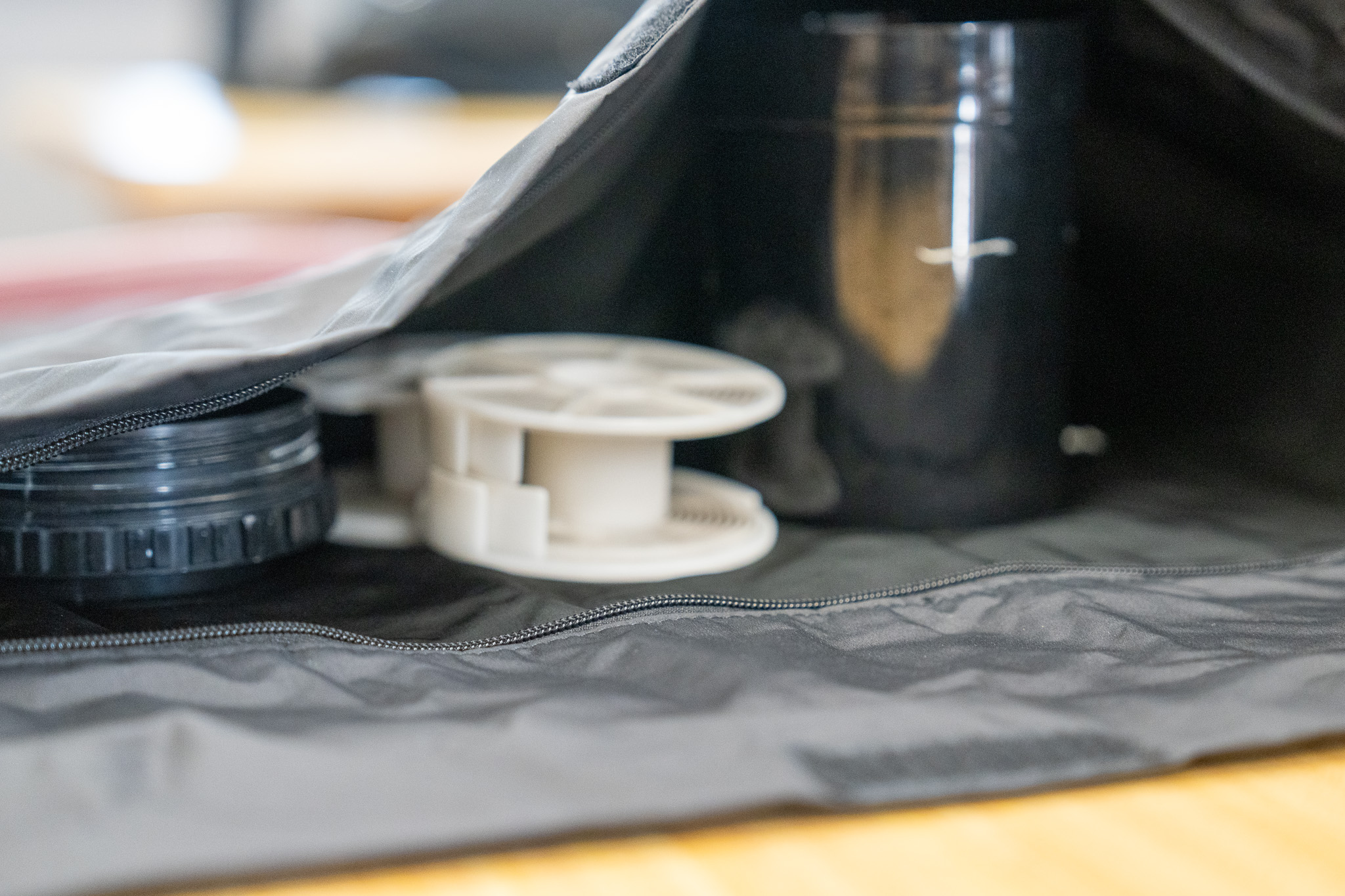

At Claremont High School, the Photography program provides students with a unique blend of technical skills and creative expression. Led by instructor Ms. Wonacott, who has been teaching photography at CHS since 2009, the program introduces students to traditional film and digital photography, allowing them to develop a strong foundation in capturing images.
For students starting in the introductory course, the focus is on learning the fundamentals of film photography, including how to manually operate a camera, develop film in a dark room, and understand key photographic principles like ISO, shutter speed, and aperture. As they progress into the advanced class, students transition into digital photography, refining their technical skills and exploring composition, lighting, and creative editing techniques.
“I love that photography gives students—whether they’re naturally artistic or more technical thinkers—a way to be creative,” said Wonacott. “Some students come in already passionate about art, while others might be more analytical. Photography allows them to use both sides of their brain, blending technical knowledge with artistic vision.”
Junior Olivia Savage, who is currently in Advanced Photography, appreciates the freedom students have to explore their creativity. “We learned how to use digital cameras and focused on different techniques, like shallow and deep depth of field. But what I love most is how we can get creative with our projects,” she said. “For one assignment, I had my parents throw colored powder in the air to create a cool visual effect. It’s fun to have that kind of artistic freedom.”
Beyond the classroom, students can showcase their work in community exhibits, contests, and local galleries. Ms. Wonacott has worked to ensure student photography is displayed outside of school, giving young artists real-world exposure. “When I was hired, one of the goals was to connect the program with the community, and we’ve done that by featuring student work in galleries and public spaces,” she said. “It’s exciting for them to see their work displayed and appreciated.”
While some students pursue photography as a career, many find value in the class as a lifelong skill or creative outlet. “Even if students don’t major in photography, I want them to leave the program with an understanding of how to use a camera and express themselves through images,” said Wonacott. “Whether they go into photography professionally or just use it for personal projects, the ability to tell a story through visuals is a powerful tool.”
For students at El Roble Intermediate or anyone considering taking photography at CHS, Savage has some advice: “If you love taking pictures—whether it’s sunsets, nature, or just capturing moments—this class is a great way to learn the technical side of photography while still being creative. Ms. Wonacott is an amazing teacher, and the class has a fun and supportive atmosphere.”
The CHS Photography program continues to inspire students, helping them develop their artistic voices while equipping them with valuable technical skills. Whether students dream of a photography career or want to explore a new creative medium, this program provides the perfect space to focus, frame, and capture their vision.
Previous Editions of CUSD Celebrates!
Stay Connected with CUSD
You are signing up for the CUSD Celebrates! mailing list. If you are interested in being featured, please email ekong@cusd.claremont.edu.
